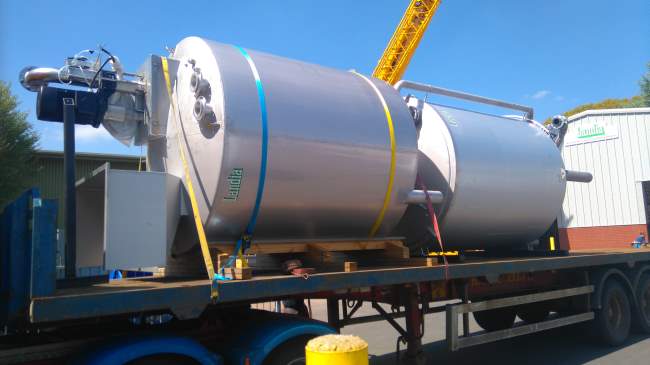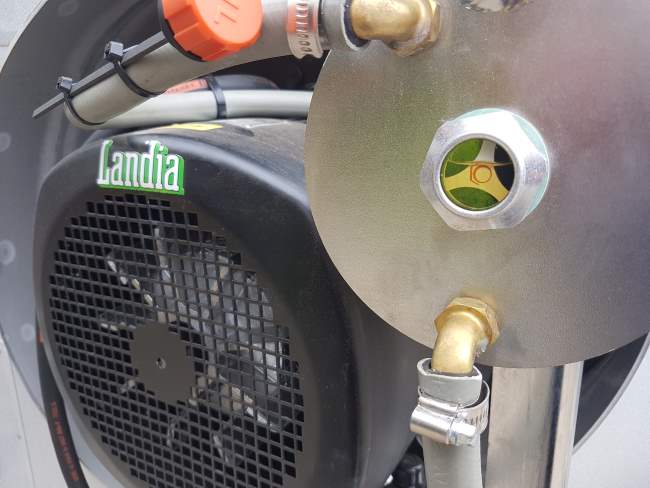There's a reason why recycling fish morts is valued as a digester feedstock amongst biogas plant operators. First, the fish mort pulp, comprising the dead young fish removed from aquaculture (mostly salmon) farms is rapidly digested. Second, mort recycling is also healthier and greener for the environment, than alternative disposal methods.
There are many sources of waste food, and ways to recycle food waste, but one of the most unusual must be to recycle fish morts by anaerobic digestion.

As the world's population continues to grow so will the amount of this type of waste grow, the main source of fish morts is from the aquaculture of fish, such as salmon and trout and that is very much a growth industry globally. Therefore, it is quite likely that the anaerobic digestion of fish morts will become commonplace in the future.
Fish morts are simply dead fish that have died during fisheries activities, but the fish that die during fish farming aquaculture activities are the main source which we will discuss here.
Since the Animal By-Products (ABP) Regulations were introduced throughout Europe in the 1990s, it has been much more difficult to use fish mort waste in fishmeal and fish oil production.
In the past, fish morts with their highly nutritious content, were also used as an ingredient in pet foods. Still, again ABP Regulations and the concern that pet owners may prefer not to give their pets any food derived from an unpleasant sounding source, have led to a decline. Changes in the formulation of pet food products have also contributed.
In addition, the old fall-back of landfill disposal is not only unsatisfactory to landfill owners who wish to reduce the organic matter sent to landfill (reduce possible landfill odours etc), but UK Landfill Tax makes it prohibitively costly.
Fish morts would preferably be incinerated if suitable facilities are not too far away from their source, but again the cost is high.
Just like any material which is more abundant than the market to use, fish waste has little or no value. It, therefore, in principle makes a wonderful low-cost feedstock for anaerobic digestion, as long as the AD Plant is licenced to accept and process ABPs.
So, what could be better than to add it to the feed materials of a Scottish AD plant? In the following Press Release, it is explained how Landia, which is one of the world's leading manufacturers of chopper pumps, propeller mixers, aeration systems and advanced process equipment, is doing just that.

Fish Feedstock Used for AD as Landia Wins Important New Contract
Landia has been awarded an important new turnkey contract in Scotland to supply pumping, mixing, ensiling and pasteurization equipment for fish morts (food waste) that will be utilised as feedstock for an expanding AD plant.
The 8m3 pasteurizer, which is fitted with Landia’s side-entry propeller mixer and equally robust dry-installed chopper pump will process the fish morts in accordance with ABP (Animal By-Products) regulations, fully approved by vets.
A 10m3 ensiling tank with an 18.5kW stainless steel long shaft chopper pump will also be designed, manufactured, installed and commissioned by Landia’s team of skilled engineers.
This unit recirculates and blends the fish morts into a smooth purée, before being discharged into the pasteurizer.
With the fish morts suitably mixed, pumped and pasteurized at 70 degrees Celcius by the Landia equipment, gas yields are forecast to increase significantly at the AD plant.
As well as its ensilers and pasteurizers, Landia also supplies the acclaimed GasMix AD digester mixing system and has just launched BioBuster, a new, non-pumping pre-treatment unit for AD feedstocks with high dry matter content.
Engineered to last, Landia’s AD and food waste/fish processing waste equipment is based upon a wealth of experience, developed since the company’s first agricultural slurry pump when it began trading in 1933, going on to create the world’s first chopper pump in 1950.
Landia.co.uk Tel: 0044 1948 661 200
Practicalities of Recycling Food Waste from Fish Morts Using Anaerobic Digestion
Wastes like a fish waste (food waste) need to be macerated (chopped up) by pre-treating the fish morts waste before it is pumped into the biogas reactor. In the example above, fish waste is pre-treated into a purée by the system before it is pumped into the biogas reactor, this requires the specialist equipment that only companies like Landia can provide.
Food waste of this type is capable of producing high biogas yields, but to achieve this the viscous material needs to be well-mixed while in the biogas reactor, and this works best when specialist mixers are also used, such as the Landia GasMix.
[Published July 2017. Updated August 2022.]






What about saline build-up if feeding fish morts. Is that going to be a problem?
What’s also amazing is that, not only is it fuel to make electricity the food, but the slurry is also fuel for the plants (fertilizer). Also, if I understand it correctly, as long as the fish mort, etc., is mashed in the pumps, all will eventually become slurry. I mean there will be no solids left over in the tank, correct? So, basically, you’re just “feeding” the fish waste, and you fuel and fertilizer?
Awesome write-up. Waste Food on our island is also a big problem. We need to start recycling the waste from fish that’s inedible and am looking into this anaerobic digestion topic.